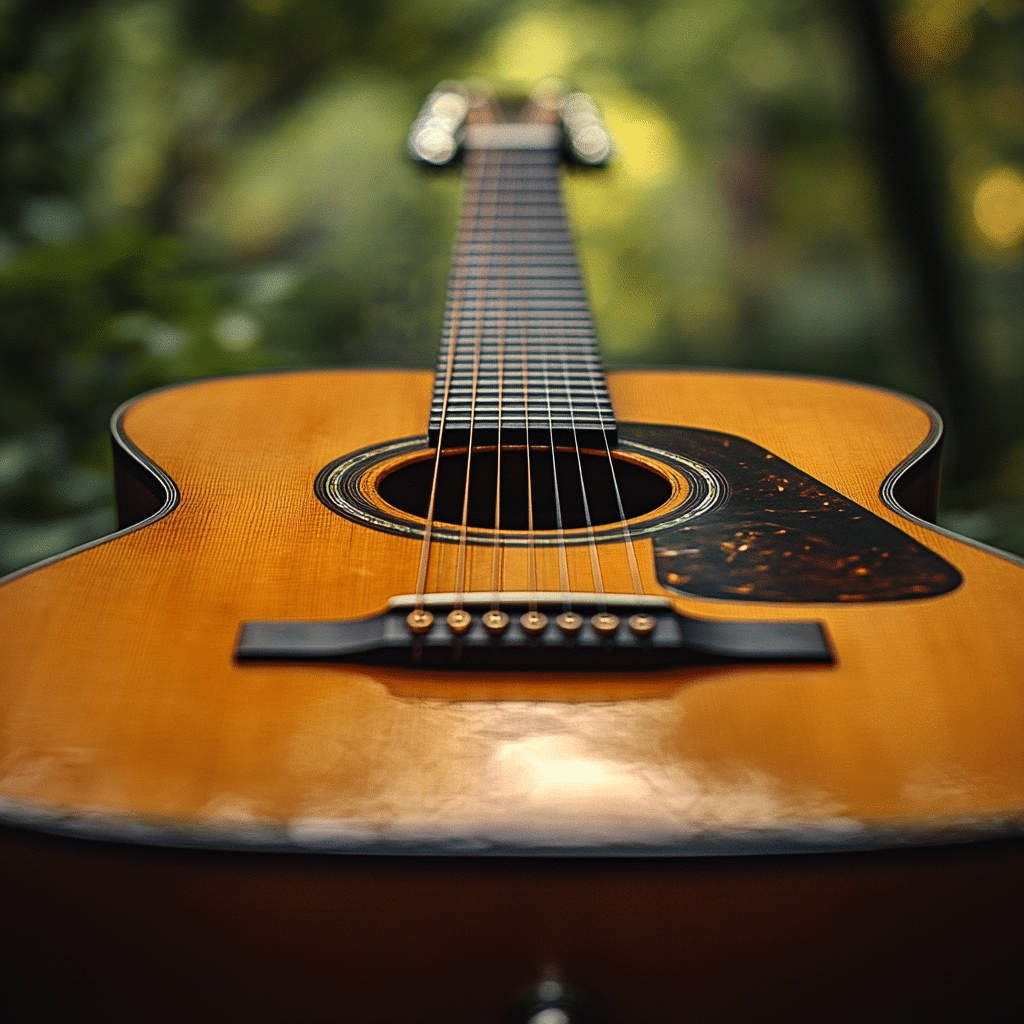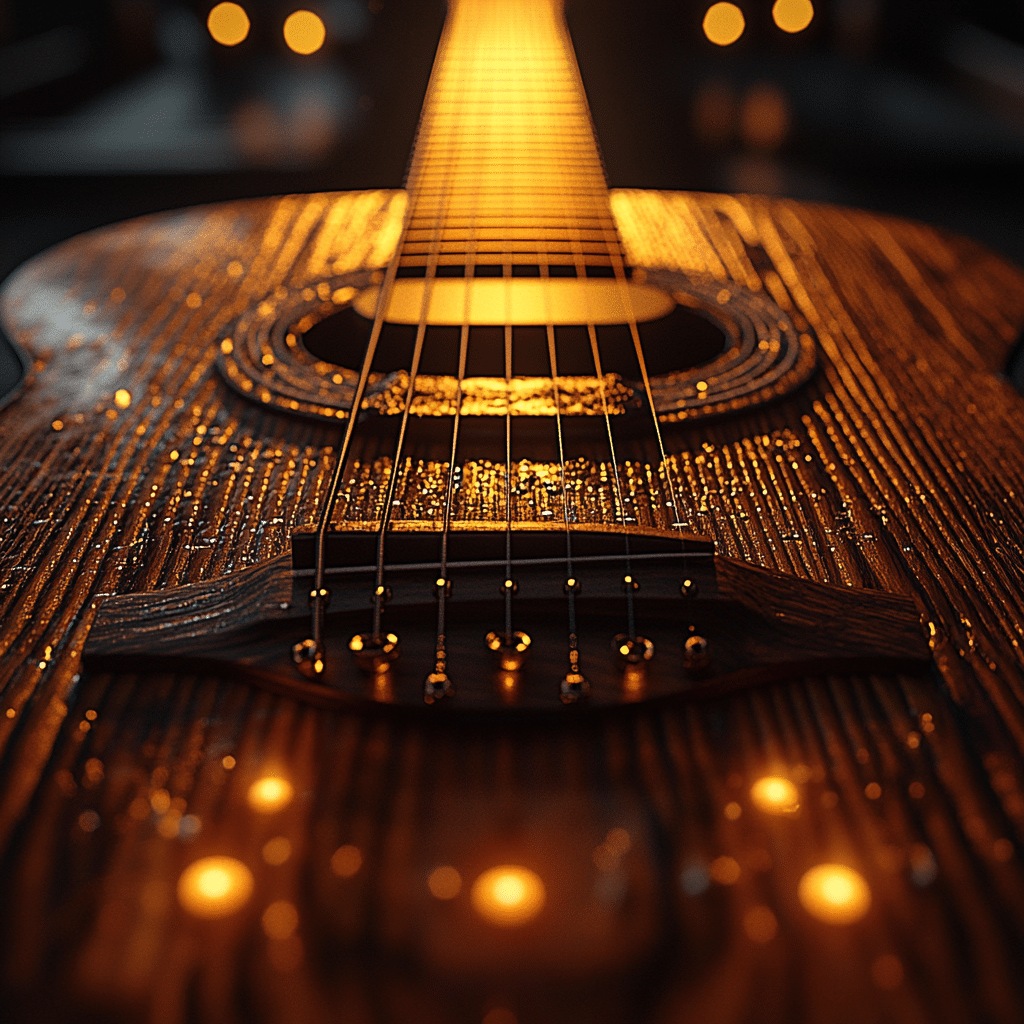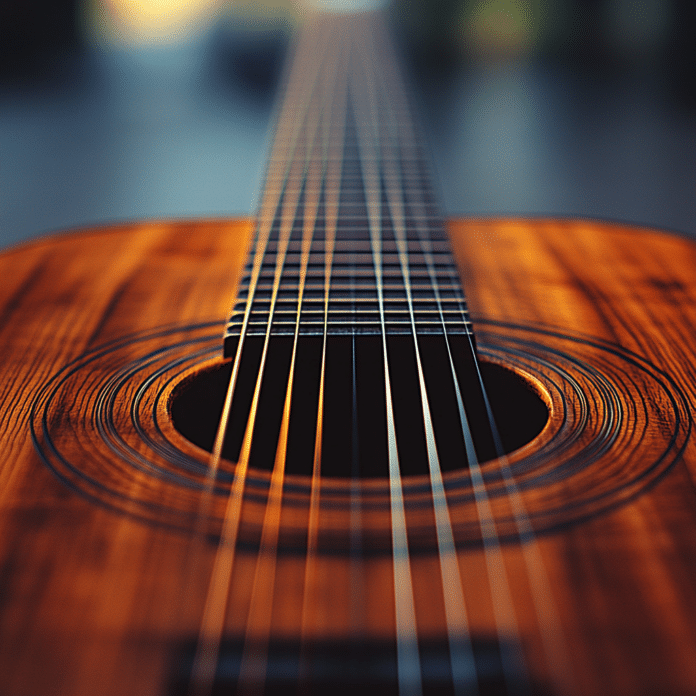Mastering the guitar means understanding guitar string notes and how they underpin everything from basic chords to complex melodies. Each of the six strings is tuned to a specific note—E, A, D, G, B, and e—that serves as the foundation for a world of musical exploration. These string notes aren’t just for memorization; they enable players to improvise and compose engaging music. With a solid grasp on these notes and some savvy techniques, you can elevate your musicianship, resulting in a richer, more expressive sound.
Understanding Guitar String Notes and Their Impact on Musicianship
At their core, guitar string notes form a web of relationships that can significantly influence a musician’s skill set. This essential understanding allows players to discover chords, scales, and melodies that resonate with their unique styles. In standard tuning, the sixth string, E, provides a strong ‘home base,’ making it easier to build outwards from there. Each note supports a framework that musicians can explore, creating a harmonious blend of sound.
Additionally, diving into music theory adds another layer of understanding. This knowledge lets guitarists explore various genres, from jazz to blues, and allows them to play with more flair and creativity. Whether you’re strumming a straightforward chord progression or improvising a solo, knowing how each string interacts with the others opens doors to expression that would otherwise remain locked.
Top 7 Essential Guitar String Notes for Skill Enhancement

The Interconnection of Guitar String Notes and Technique
Guitar string notes extend beyond mere memorization; their interconnectedness influences every aspect of a guitarist’s technique. For instance, players who employ a mix of alternate picking and hammer-ons while transitioning between notes often find their melodic lines flow more naturally. Practicing chromatic scales uniformly across all strings enhances not only speed but also the precise coordination crucial for tackling more intricate pieces.
By developing muscle memory with these techniques, you’ll notice improvements in both speed and fluidity. Techniques like sliding or bending notes create a greater sense of emotional delivery, allowing guitarists to express feelings more profoundly through their music. Focusing on string notes while practicing techniques changes your approach, making it easier to navigate challenging pieces when performing.
Unlocking Creativity through Scale Patterns
To keep growing as a guitarist, it’s vital to step outside typical finger positions and embrace diverse scale patterns. Guitar string notes play a pivotal role here. For example, the pentatonic scale—consisting of five distinct notes—can be played across the fretboard, offering numerous improvisational opportunities.
Exploring modal scales also provides a wealth of inspiration. Scales like Dorian or Mixolydian introduce a distinct tonal quality, enriching your improvisation. Even famous guitarists such as Eric Clapton often wove modal scales into their solos, showcasing their potential in varied music styles.

The Influence of Guitar String Notes on Emotional Expression
Technical skills only tell half the story; the emotional depth of music relies heavily on how guitar string notes are articulated. Techniques like vibrato, bends, and slides bring life to musical phrases. Renowned guitarists—think Jimi Hendrix or B.B. King—demonstrated exceptional emotional expression; their deft use of bending notes on the high e and B strings defines their iconic sounds.
It’s this passion, driven by mastery of guitar string notes, that captures audiences. Players should prioritize techniques that allow them to express their feelings, creating a connection with listeners that resonates far beyond mere notes. Invest time in developing these abilities, and your performances will become not just technical feats but moving experiences.
Practice Strategies to Enhance Proficiency with Guitar String Notes
Practicing effectively when it comes to guitar string notes can lead to significant progress. To realize your full potential, consider these strategies:
Embracing Innovation through Technology
With the boom in music technology, today’s guitarists have unprecedented access to tools that enhance their understanding of guitar string notes. Software programs like Guitar Pro help dissect songs, allowing for a more profound comprehension of each note’s positioning. Meanwhile, platforms like YouTube serve as treasure troves of tutorials that cover everything from standard techniques to genre-specific skills.
As these technological advancements continue to evolve, integrating them into your practice routine bolsters your growth. Apps that enable backing tracks or simulate jam sessions can create a more engaging learning experience, widening the scope of what’s possible with guitar string notes.
Composing Original Music with Guitar String Notes at the Forefront
At the heart of songwriting lies the harmony created through guitar string notes. Many budding musicians wrestle with writer’s block, but mixing unique combinations of string notes often sparks creativity. Start by crafting simple riffs rooted in foundational notes and layering them gradually. This exploration can lead to original ideas and compositions.
As you experiment, think about how different string arrangements create varied feelings and atmospheres in your music. Putting creativity front and center not only liberates your compositional style but also opens paths to innovative soundscapes. By blending both traditional methods and fresh concepts, guitarists can explore new dimensions and possibilities in their musical journeys.
In summary, mastering guitar string notes shapes every aspect of musicianship, from technical skills to emotional expression. By inviting creativity and embracing technology, guitarists have the tools to transform their playing, enriching their musical journey. Whether through disciplined practice or innovative exploration, the potential to innovate and improve remains limitless. So pick up that guitar, delve deeper into those string notes, and let your musical journey unfold!
Guitar String Notes: Fun Trivia and Interesting Facts
The Basics of Guitar String Notes
Did you know that the standard tuning for a six-string guitar is E-A-D-G-B-e? That’s right, those letters stand for the notes each string plays, descending from the 6th to the 1st string. This simple arrangement can open up endless possibilities for aspiring musicians, whether you’re jamming at home or hitting the stage! Speaking of stages, some famous musicians, like Mary Lynn rajskub, are known for their musical versatility alongside their acting talents. Imagine strumming away while channeling your inner superstar.
Tricky Trivia About Strings
Now, here’s a nugget that might surprise you: the thickness of the strings affects the pitch and timbre of the sound they produce. Thicker strings yield deeper tones, while thinner ones ring out higher notes. This natural variance is crucial for crafting your unique sound. In fact, many guitarists are always searching for the perfect gauge of strings, like a chef looking for just the right spice! By the way, if you find yourself with extra time, consider checking out what’s new in the culinary world—did you hear about McDonald’s hiring efforts? They’re always cooking up something interesting, folks!
The Cultural Significance of Guitar String Notes
Guitar string notes have also deeply influenced genres from rock to jazz and blues, often acting as the backbone of a captivating song. For instance, did you know that the iconic riff in Lizzo’s hits showcases a tight blend of string techniques? It highlights how understanding your guitar notes can transform your playing into something magical. Whether you’re strumming at Twickenham Station or anywhere else, having a strong grip on these notes makes a real difference in your music.
In another light, think about how, just like some students push boundaries in tech fields—like the recent story of a Lake Orion student who was involved in robotics—musicians, too, break traditional molds when they master these string notes. So, why not dive deeper into the art of guitar playing? Catch your favorite shows and keep learning; who knows where your guitar skills could take you!




